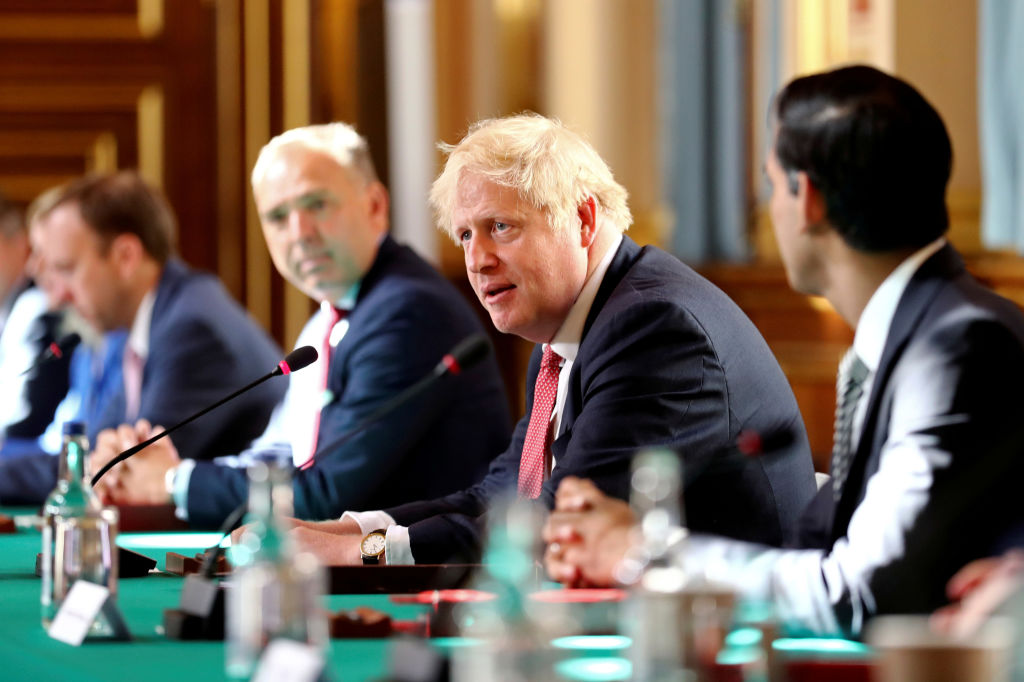The Prime Minister wants us back to normal by Christmas. If he is serious, then his government needs to take a big step forward in how it communicates evidence on Covid-19 with the public. Every day we get new insights about the coronavirus from research and statistics. Yet, for some reason, the government is holding its cards close to its chest about how it is assessing new scientific developments, and how this may affect policy decisions.
Government communications currently seem to avoid telling people where their risks from Covid are actually low. There is a general reluctance to speak openly about how risk is assessed and the trade-offs there are with other competing health risks and economic impacts. The key questions aren’t being articulated – often the information the government is using to answer questions is not publicised and any hypotheses about the answers aren’t being shared.
Efforts to help the public navigate these new risks are being hamstrung by this absence of open and mature communication. For this reason, those of us involved in that effort have written to ministers to ask them to show more trust in the public by offering clarity about their thinking on the risk factors, transmission and trade-offs of the disease.
The government must show more trust in the public by offering clarity about their thinking
At present, the scientific research can tell us a lot about who is most at risk from the virus. The risk of dying from Covid-19 is vastly different depending on your age: for children, according to ONS data, the chance of catching the disease and dying is currently around 1 in 2.5 million. For people over 90, it has been around 1 in 50. Men are significantly more at risk. Over 90 per cent of Covid deaths in England and Wales have been in people with pre-existing conditions.
Evidence is also emerging about Covid’s effect on those who recover, and whether serious illness is more likely in some groups. Public Health England figures don’t show an elevated risk among BAME groups who tested positive but other studies do, along with a possible overlap with conditions such as diabetes and vitamin D deficiency.
The differing significance of these factors is becoming clearer every day, but the public conversation is still stuck on talking about ‘vulnerable groups’. It is not clear how the government is estimating different degrees of risk as it eases lockdown restrictions. But people clearly need help to consider their risk proportionately.
Studies are underway to determine for how long and how consistently people gain immunity, including whether asymptomatic people had a sufficient viral dose to form antibodies. To determine whether a vaccine is effective, or what will happen without one, the government will need to model immunity in the population. Ministers deny thinking about herd immunity and yet they must do so to understand the possible scenarios.
The government has also spent a lot of time talking about the R number. But the R number is of little use for people to gauge risk. They need to know the prevalence of the disease in their area – and how government is verifying this, given that numbers of infections are low and could include false positive tests.
Clarity about where the lower risk settings are would help local bodies assess the safety of certain activities. For example, when it comes to schools there are few recorded cases of transmission from children, according to a European Centre for Disease Prevention and Control review. Or those heading to the beach on a sunny day: Chinese research found just 0.3 per cent of outbreaks resulted from outdoor transmission (that’s an indoor/outdoor risk ratio of 300 to 1). Yet both schools and beaches have dominated the public discussion on risks.
The UK’s GDP is forecast to fall by 10 to 15 per cent, but modelling by HM Treasury of the costs of continuing different restrictions does not appear to have been published. Nor have models which show the cost-benefit calculations for other health and welfare effects and the communities they affect. The government has not indicated whether it is using any calculation of costs per fatality or per Quality Adjusted Life Year, or whether it considers this calculation inappropriate.
The government has said that its own staff may work from home until 2021. But if it has made projections of the impact of home working on the service industries, city economies or the workforce, they also don’t appear to have been published.
With all of the above, the government should set out the questions that we face; how policy will be affected by the answers; the limitations and uncertainties about what we currently know; what is being done to fill in the gaps; and how much of this has been communicated with the public.
This openness would help the government meet the challenges of the coming months with a shared understanding across its own bodies and the organisations it relies on – including local authorities and trade bodies, as well as research groups who could address the gaps and improve data collection. We all need to understand what the government is trying to do and the relative significance of what we, individually, can do – and how new information may alter that. This is the way the government will gain the trust and effectiveness it needs for the Christmas it is wishing for.






Comments